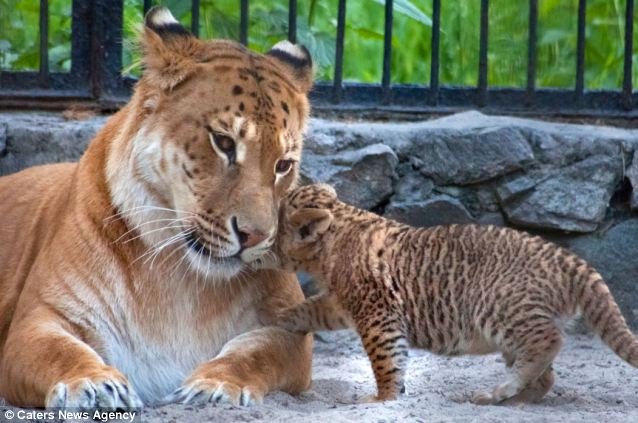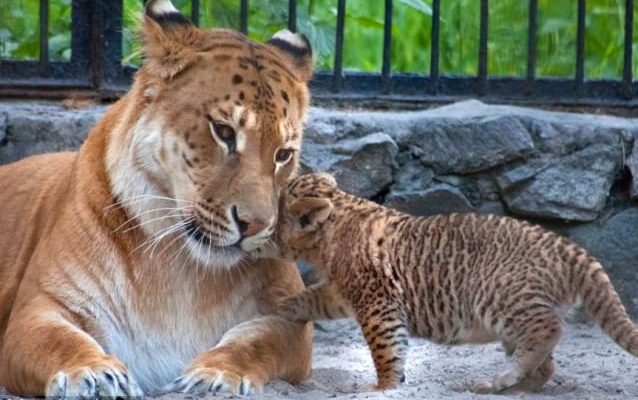
Ligers are a product of breeding between male lions and female tigers. They aren’t found in the wild but are bred in captivity, which raises interesting questions about their roles in ecosystems. Even though they can’t fulfill the same roles as their parent species in their natural habitats, they can still offer insights into conservation, biodiversity, and the complexities of animal genetics. So, how exactly do ligers fit into the bigger picture of ecological balance? Let’s explore.
What Are Ligers?
Ligers are one of the largest big cats in the world, showcasing a blend of traits from both parent species. They can weigh over 1,000 pounds, making them larger than both lions and tigers. Typically, they inherit the lion’s mane and the tiger’s stripes. This stunning appearance isn’t just for show; it also plays a role in their behavioral dynamics and how they interact with their environment.
These creatures are often friendly and sociable compared to their wild relatives. Due to their genetic makeup, ligers exhibit unique traits—like a playful demeanor—making them appealing to many zoo visitors and animal lovers. However, despite their captivating presence, they do not exist naturally in the wild, thus altering any potential contributions they could make to natural ecosystems.
How Do Ligers Affect Biodiversity?
Biodiversity is fundamental to the health of ecosystems, and every species plays a part. In captivity, ligers don’t have a direct impact on biodiversity like lions or tigers do in the wild. However, their existence raises questions about the importance of conserving the distinct genetic lines of their parent species.
By studying ligers, scientists can explore issues like hybrid vigor and genetic diversity. While ligers themselves do not contribute to the gene pool of wild populations, they do highlight the necessity of protecting natural habitats where lion and tiger populations thrive. It reminds us that when we dabble in breeding, we must consider the larger ecological implications—something that goes beyond just the *wow factor* of a liger.
The Role of Predation
Predators play a crucial role in maintaining the balance of their ecosystems, and this is where ligers present a twist. In nature, lions and tigers help control populations of other animals, which prevents overgrazing and promotes diverse plant growth. Ligers, while they may exhibit predatory behaviors, don’t naturally fit into this role as they don’t coexist with their parent species in the wild.
If they were placed in a natural habitat, their size and strength could impact prey dynamics. However, since they don’t exist in the wild, they won’t have the same ecological effects. This absence highlights the importance of preserving the environments that support lions and tigers, as they are essential for maintaining healthy ecosystems.
Challenges of Hybridization
The existence of ligers raises important ethical and ecological questions about hybridization in the animal kingdom. Hybrid animals can lead to health issues and reduced fertility. In the case of ligers, they face several health concerns due to their size, which can put a strain on their bodies.
Additionally, hybridization dilutes the genetic lineage of pure species, like lions and tigers. When we focus on creating new hybrids, we risk losing the unique characteristics that define each species. Conservation efforts must prioritize maintaining the pure breeds of lions and tigers to ensure that they can perform their natural roles in the ecosystem effectively.
Conservation Implications of Ligers
While ligers may seem like fascinating creatures, their existence reminds us of the importance of conservation. They can serve as an educational tool, raising awareness about the threats faced by both lions and tigers in the wild. As populations of these big cats dwindle due to habitat loss and poaching, ligers symbolize the need for strong conservation efforts.
By fostering a deeper understanding of hybrids like ligers, conservationists can highlight the urgency of protecting their parent species. Creating awareness about the challenges faced by lions and tigers can motivate people to support conservation initiatives that aim to preserve these majestic animals and their ecosystems.
The Importance of Captive Breeding Programs
Captive breeding programs play a vital role in protecting endangered species, and ligers can sometimes be found in these facilities. Although they don’t contribute to the conservation of genetic diversity in the wild, they do raise public interest and awareness about the broader issues affecting wildlife.
These programs often focus on the more pressing issue of maintaining pure stocks of lions and tigers while using the intrigue of hybrid animals like ligers to draw attention and support. By educating visitors about the conservation needs of these big cats, zoos and wildlife sanctuaries can encourage people to engage in conservation efforts.
So, what’s the takeaway about the liger’s role in its ecosystem? While they may not actively contribute to the balance of nature like their purebred relatives, they bring attention to important conservation issues. They remind us that every species—whether hybrid or pure—plays a part in our understanding of biodiversity and the need for conservation.
Ultimately, the existence of ligers encourages us to reflect on the consequences of our actions. By appreciating and supporting the preservation of lions and tigers in the wild, we can help ensure a richer and more diverse ecosystem for generations to come.

